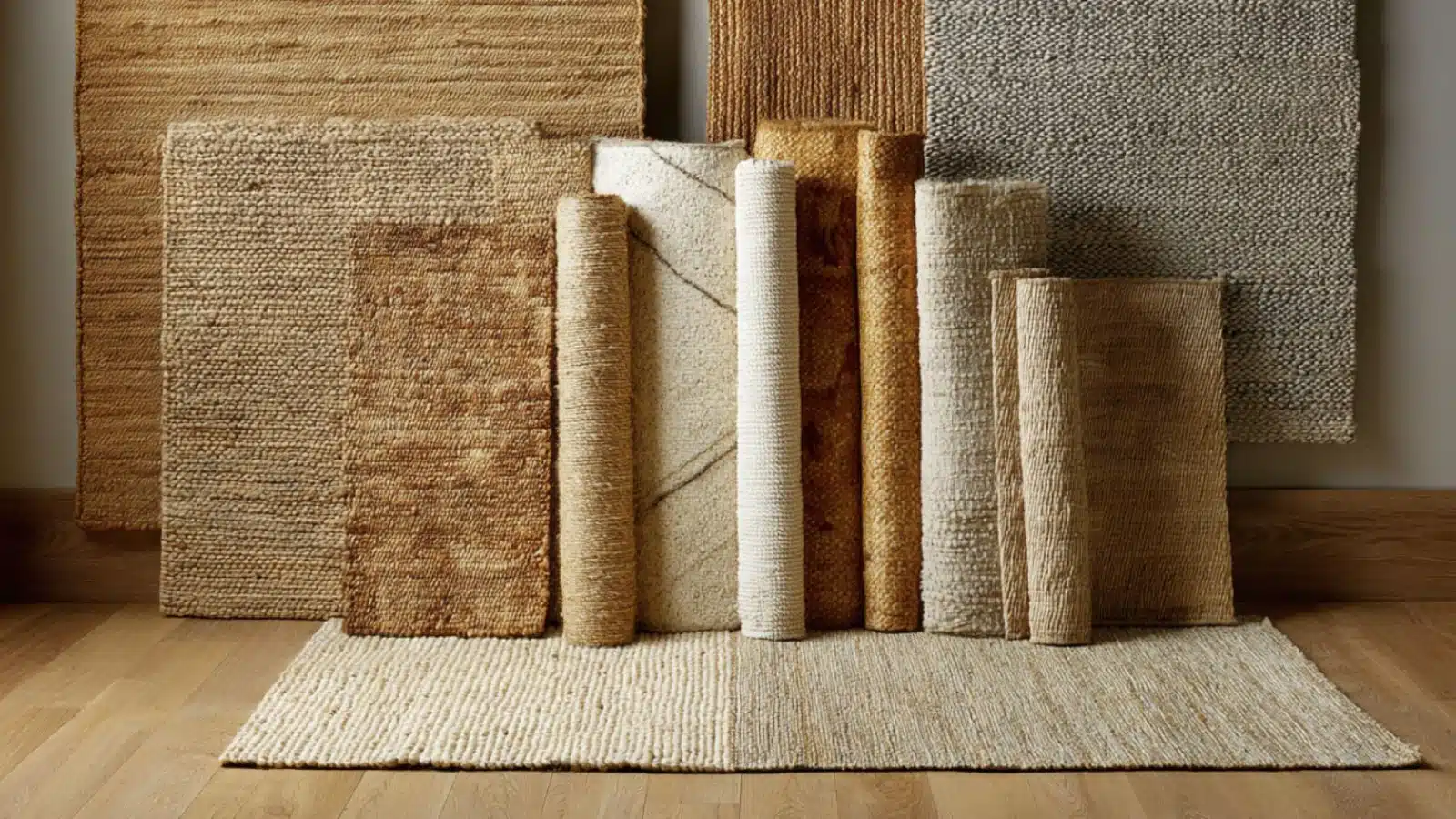Natural Fiber Nursery Rug Inspiration for Eco Homes with Cozy and Sustainable Style
Table of Contents
In a world where sustainability is more important than ever, eco-conscious parents are increasingly choosing natural fiber rugs to furnish their nurseries. These rugs aren’t just stylish—they’re breathable, durable, and free of synthetic chemicals. Whether you’re preparing for your first child or redesigning a nursery to reflect your values, natural fiber rugs offer a beautiful solution that blends comfort with conscious living.
Recent data from interior trend reports show a sharp rise in demand for organic and non-toxic baby room furnishings. Parents are seeking materials that are safe for crawling, napping, and everyday play—without sacrificing style. Natural fiber rugs like jute, wool, seagrass, and cotton bring texture, warmth, and character to any nursery, while keeping your indoor air clean and your design grounded in nature.
This article dives deep into the best natural fiber rugs for eco homes, exploring their unique textures, sustainable qualities, and design versatility. From boho woven jute to soft wool blends, each section includes practical tips, pros and cons, and visual inspiration through MidJourney prompts.
Let’s create a nursery that’s not only beautiful—but breathable, baby-safe, and built for mindful living.
Understanding the Most Popular Natural Fibers for Nursery Rugs
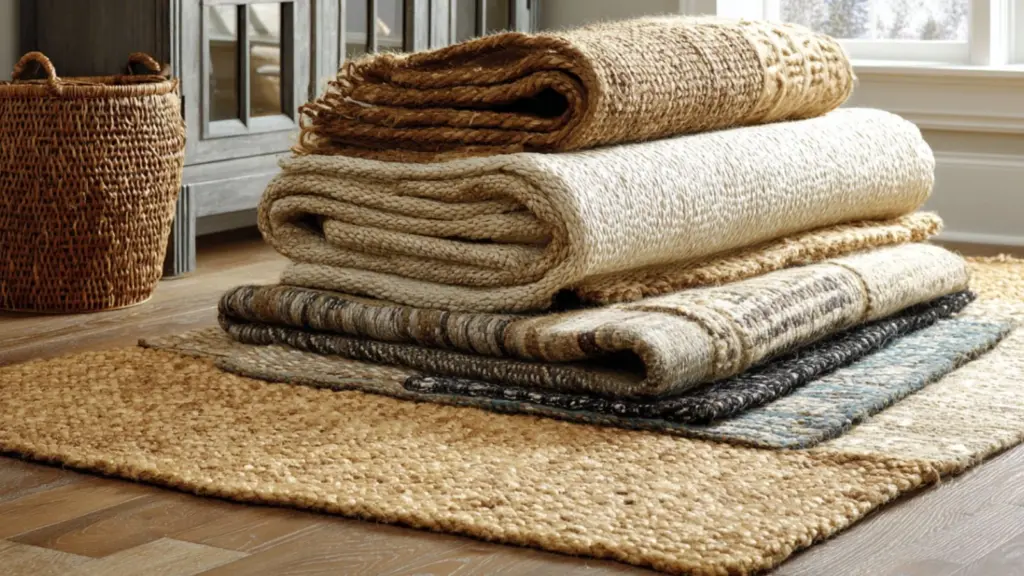
Before diving into styling ideas, it’s helpful to understand what makes each natural fiber unique. While all are sustainable, they offer different benefits in terms of softness, durability, and maintenance.
Wool is a nursery favorite for its softness and insulating properties. It’s naturally hypoallergenic and flame-resistant—making it ideal for safety-conscious parents. Jute and sisal are known for their rustic textures and eco credentials, though they’re firmer underfoot. Cotton is a versatile option that’s soft, washable, and ideal for layering. Seagrass and hemp offer distinctive weaves that resist wear and moisture.
Natural Fiber Comparison Table
| Fiber Type | Key Features | Ideal For | Considerations |
|---|---|---|---|
| Wool | Soft, insulating, stain-resistant | Comfort-focused nurseries | Higher price point |
| Jute | Rustic texture, biodegradable | Boho or neutral decor | Can shed and stain |
| Cotton | Soft, washable, breathable | Everyday use, playful spaces | May wear faster over time |
| Sisal | Durable, structured, textured | High-traffic nursery zones | Rougher texture |
| Seagrass | Water-resistant, smooth weave | Tropical or nature-inspired nurseries | Limited color variation |
Choosing the Right Rug Size and Shape for Your Nursery
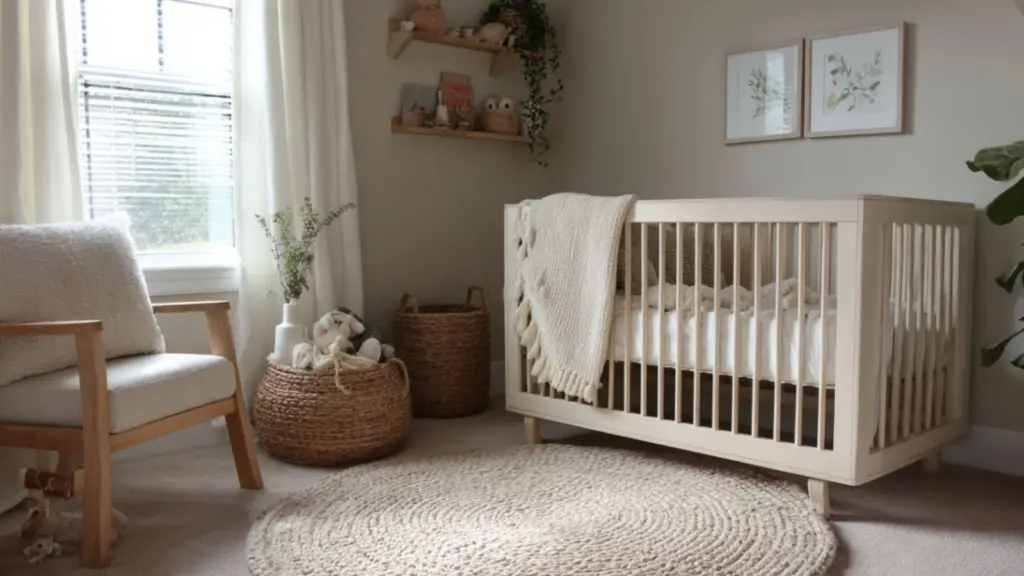
Size and shape matter just as much as material when selecting a nursery rug. A well-sized rug grounds the room, defines the play area, and adds warmth—especially in rooms with wood or tile flooring.
Round rugs are perfect for cozy corners or under cribs, while rectangular rugs help define the main area of the room. Layering is also a stylish and practical way to introduce natural fibers: a wool base rug can be paired with a smaller, textured jute mat for added depth.
Ensure the rug fits comfortably under at least two-thirds of major furniture pieces like the crib, rocker, or changing table. Also consider a non-slip rug pad for safety, especially with active toddlers.
Nursery Rug Size Guide
| Room Size | Recommended Rug Dimensions | Best Rug Shape | Visual Balance Tips |
|---|---|---|---|
| Small (8×10 ft) | 4×6 ft or 5×7 ft | Rectangular or round | Place under crib or reading nook |
| Medium (10×12 ft) | 6×9 ft or 8×10 ft | Rectangular | Extend beyond major furniture |
| Large (12×14 ft) | 9×12 ft or larger | Rectangular with layered rounds | Use to define zones (play, sleep) |
Designing with Jute: A Stylish and Earthy Choice
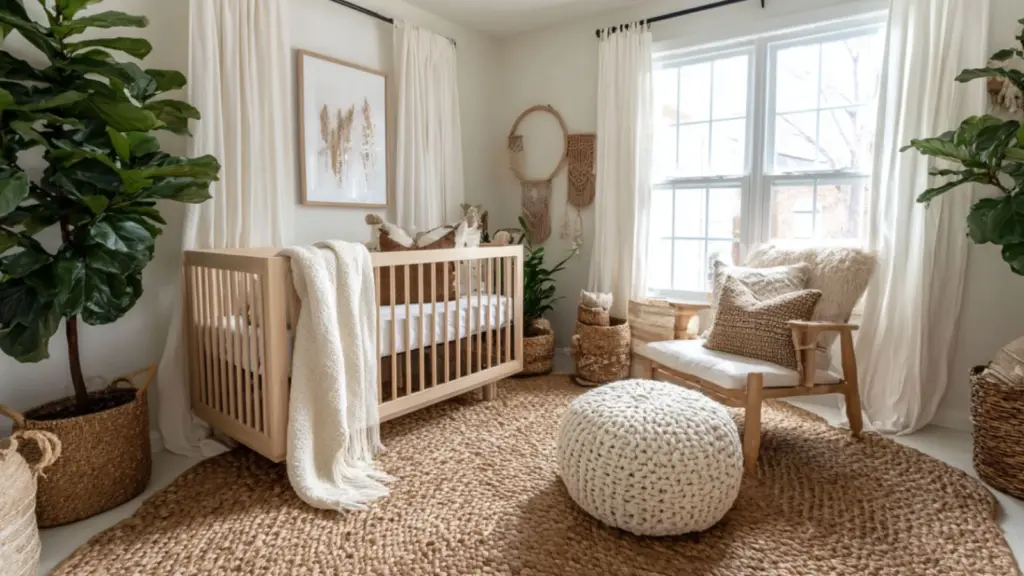
Jute rugs are a go-to for earthy nursery design. Their chunky weave and warm tone add organic texture, grounding the space without overwhelming it. Plus, jute is incredibly eco-friendly—it’s harvested from a fast-growing plant, biodegradable, and requires minimal processing.
In the nursery, jute rugs shine when styled with light woods, linen drapes, and soft creams or sage green accents. They work well as the main area rug or layered beneath softer mats in high-play zones.
However, jute does have some limitations. It’s not the softest option for bare knees, and it can absorb moisture, so avoid placing it in areas prone to spills. That said, it’s durable, stylish, and a great choice for families wanting natural beauty underfoot.
Jute Rug Styling Ideas
| Use Case | Styling Tips | Pairing Elements |
|---|---|---|
| Main Area Rug | Choose a flatweave or braided jute style | Combine with neutral or tan furniture |
| Reading Nook | Use a round or oval jute rug | Pair with a knit pouf and floor lamp |
| Layering | Place over a cotton base rug | Add texture with wool throw blankets |
| Boho Vibe | Select a fringe or tasseled edge | Match with rattan, wall hangings |
Wool Rugs for a Soft and Cozy Nursery Feel
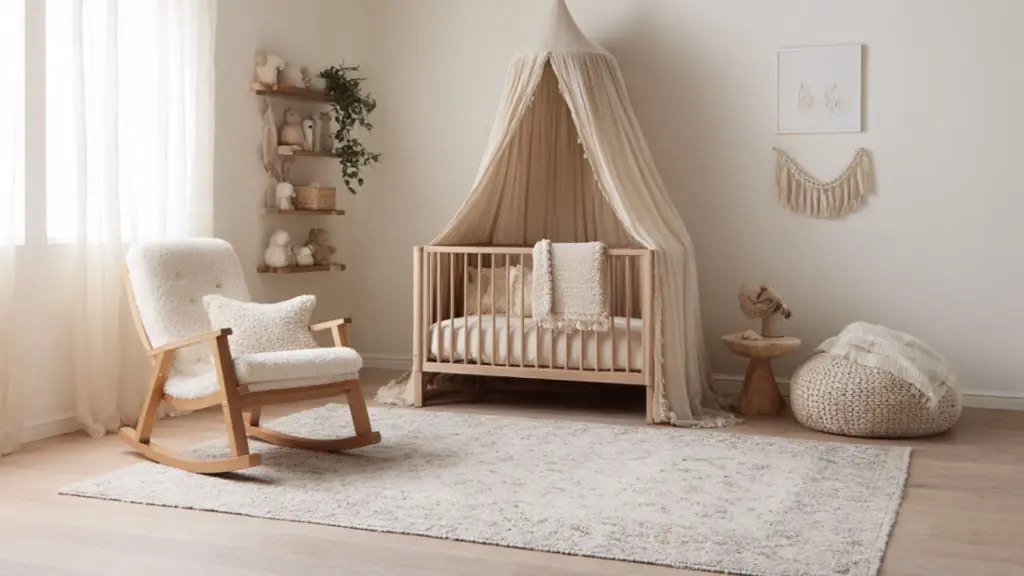
If your top priority is comfort, wool is your best friend. It’s naturally plush, insulative, and soft on sensitive baby skin. Wool is also resistant to dust mites and flame-retardant without added chemicals—making it ideal for allergy-prone homes and health-conscious parents.
Wool rugs come in a variety of weaves and patterns. You’ll find everything from minimalist ivory loops to intricate Berber-style motifs that add global charm. These rugs can serve as focal points, soft landing zones, or even wall hangings in the nursery.
Despite their many benefits, wool rugs do require care. They may shed lightly at first and aren’t as stain-resistant as synthetics. Opt for a hand-tufted or flatwoven wool rug with a rug pad underneath to avoid slippage and ensure longevity.
Wool Rug Use Ideas in Eco Nurseries
| Use Case | Design Tip | Benefit |
|---|---|---|
| Main Rug | Choose light tones or soft patterns | Calms and brightens the room |
| Layered Comfort | Place under play mats or baskets | Adds cushion and acoustic absorption |
| Decorative Piece | Use patterned wool for visual warmth | Combines function with style |
| Wall Hanging | Mount small tufted wool rugs | Brings texture off the floor |
Cotton Rugs: Washable and Family-Friendly
For busy parents, cotton rugs offer one big perk—easy cleaning. Many are machine washable or lightweight enough for regular care. They’re soft underfoot and come in playful designs and soft pastels perfect for baby rooms.
You’ll find cotton rugs in braided, woven, or printed styles. Because they tend to lie flat and don’t have the bulk of wool or jute, they’re perfect for layering or placing in play areas. Use them as color accents or pattern pops in an otherwise neutral space.
One drawback is their durability. Cotton rugs may fade or wear faster over time, especially in high-traffic spots. But for budget-friendly style that’s gentle on babies and the environment, they’re a solid choice.
Cotton Rug Consideration Table
| Benefit | Best Use Case | Maintenance Tip |
|---|---|---|
| Machine Washable | Changing areas, under high chairs | Wash on cold and air dry |
| Lightweight | Seasonal nursery updates | Easy to rotate or swap out |
| Pattern Options | Add whimsy to minimalist spaces | Mix solids and subtle prints |
| Soft Texture | Crawling or tummy time zones | Pair with a padded rug mat |
Layering Natural Fiber Rugs for Dimension and Function
Layering is one of the best design techniques to combine different textures while keeping the room cozy and practical. Start with a larger jute or sisal rug as your base—it anchors the space visually. Then, layer a smaller cotton or wool rug in the center for softness and warmth.
This method also lets you experiment with color and scale. A neutral base with a patterned top rug brings both interest and functionality to the floor. For example, layer a round cotton rug over a square jute one to highlight the crib zone, or add a soft rug over sisal in a play corner.
Rug Layering Guide for Nurseries
| Base Rug (Bottom) | Top Rug (Accent) | Purpose and Placement |
|---|---|---|
| Jute Rectangle | Wool Oval | Under rocker or crib zone |
| Sisal Square | Cotton Circle | In center of room for crawling space |
| Seagrass Base | Patterned Cotton | Under teepee or canopy nook |
| Neutral Wool Flat | Chunky Braided Mat | Creates play space or toy station |
Conclusion
Choosing a natural fiber rug for your nursery blends eco-conscious living with thoughtful design. From the warm texture of jute to the plush softness of wool or the family-friendly washability of cotton, each fiber offers unique benefits that support both style and sustainability.
Natural rugs create a comforting, breathable foundation for your baby’s first space. They absorb sound, define zones, and add personality—all while keeping the environment healthier for your child. Whether you’re designing a neutral boho room or a soft pastel space, natural fiber rugs help anchor your nursery with intention, texture, and love.

